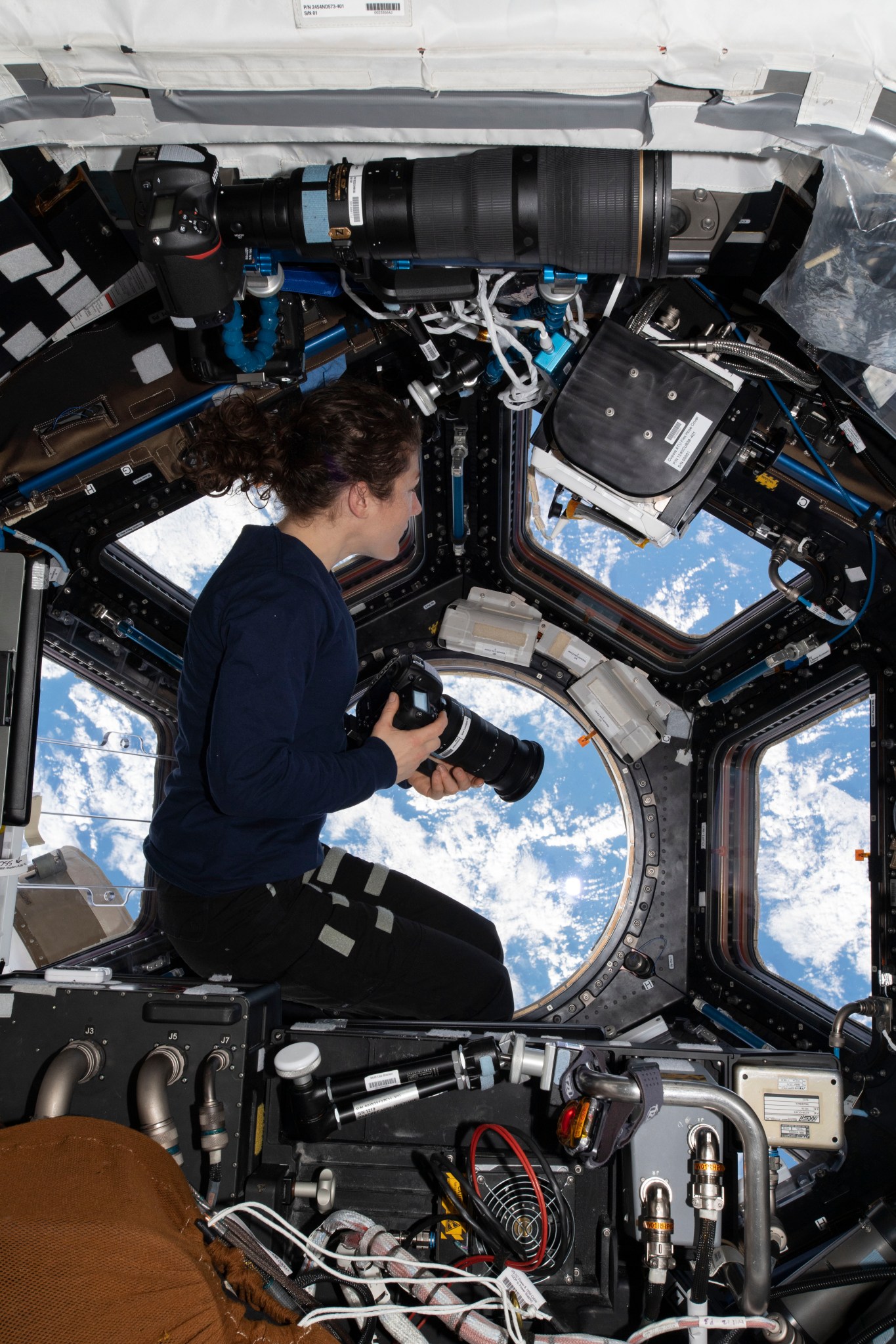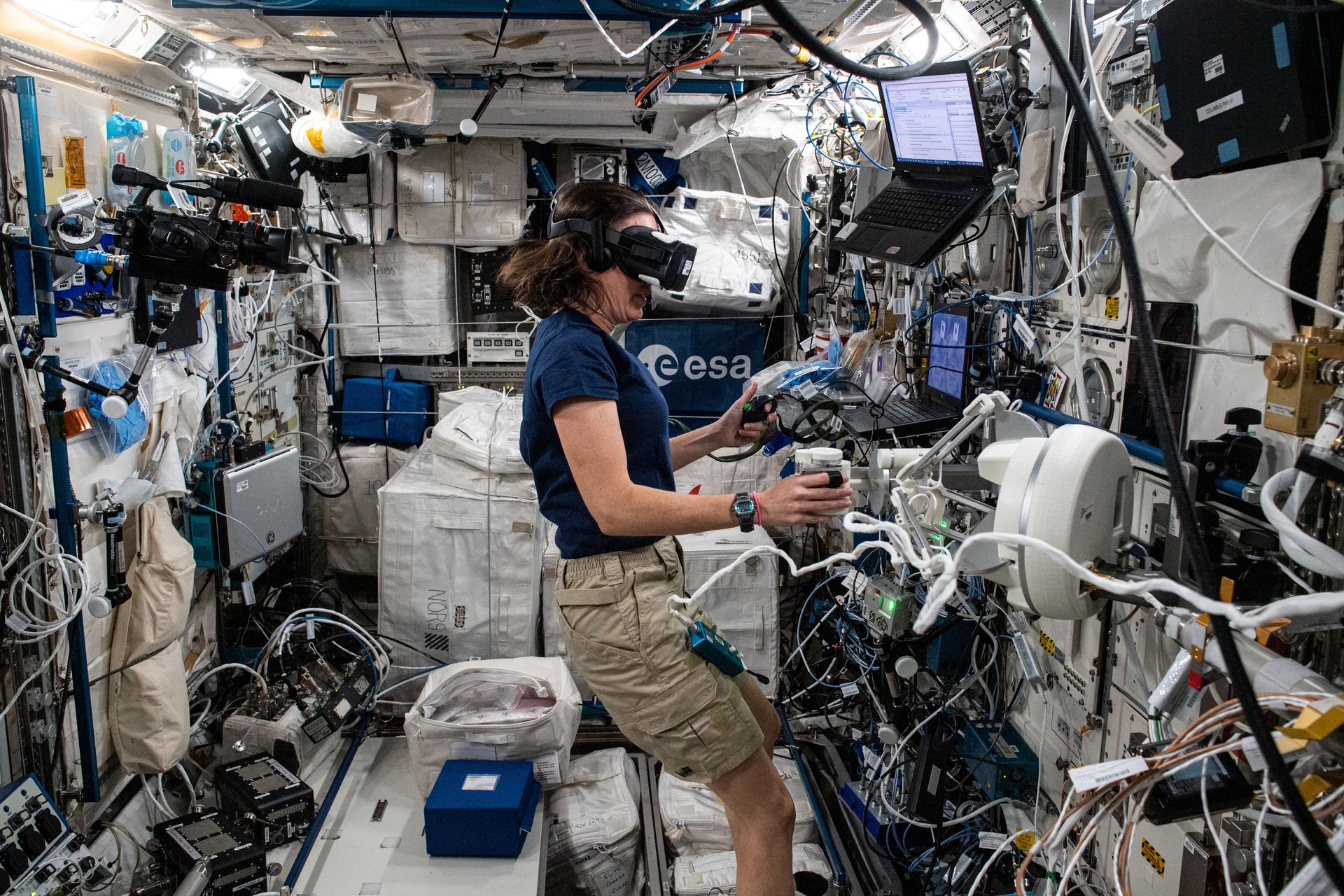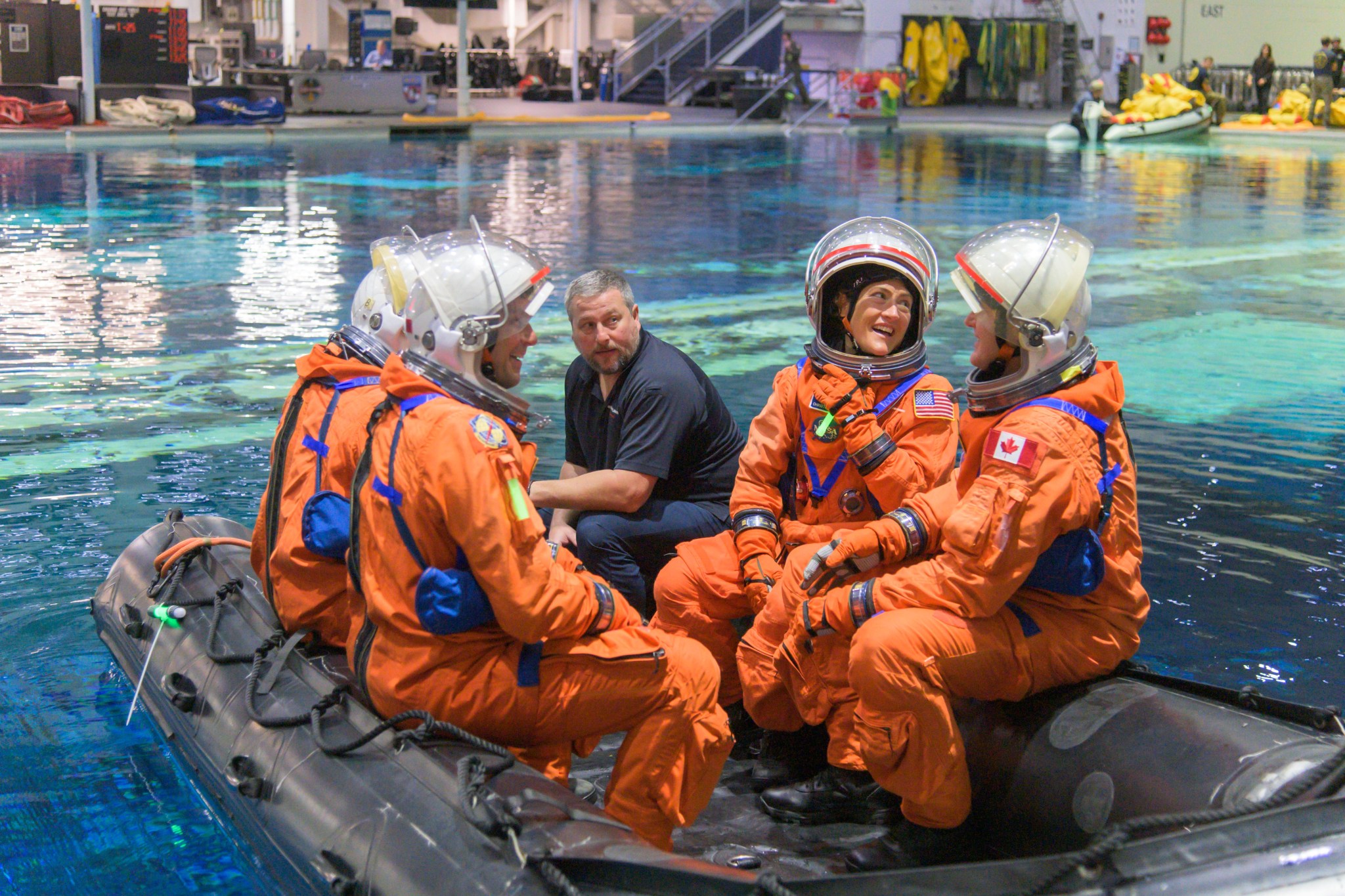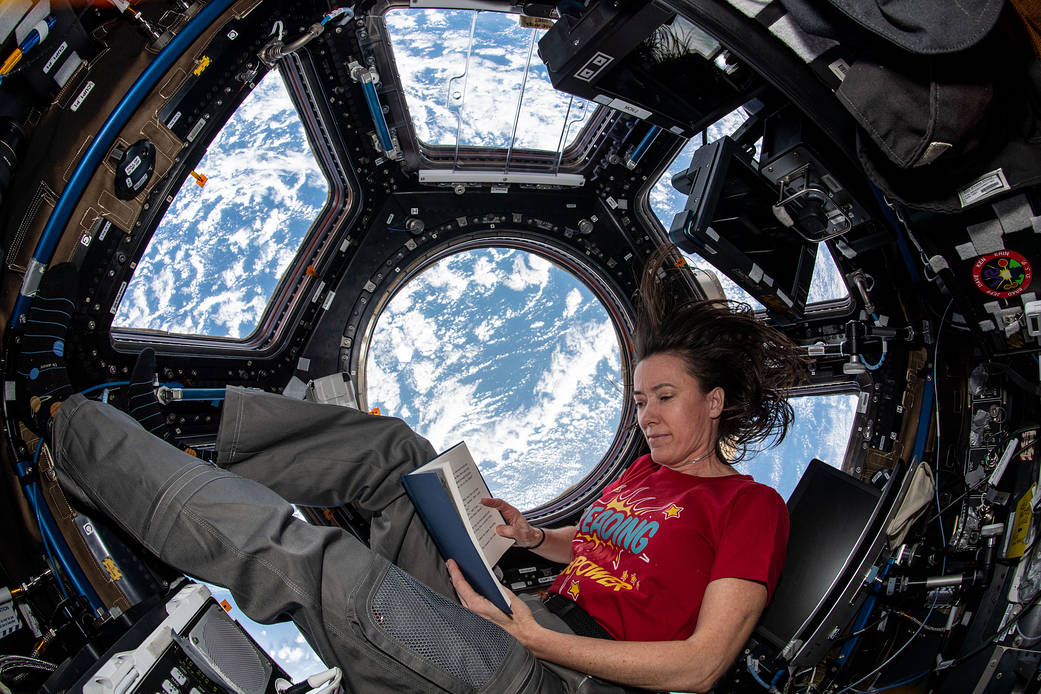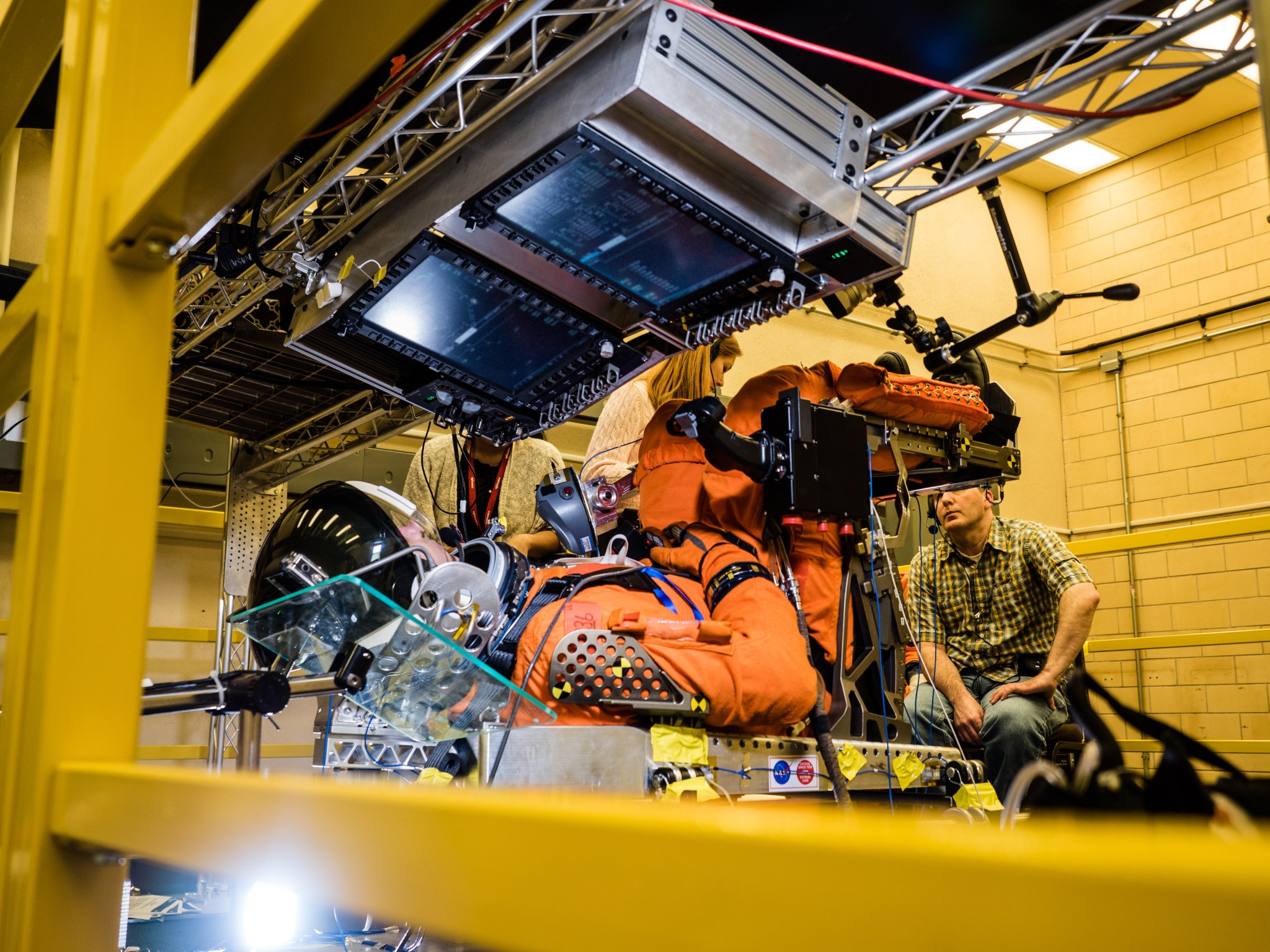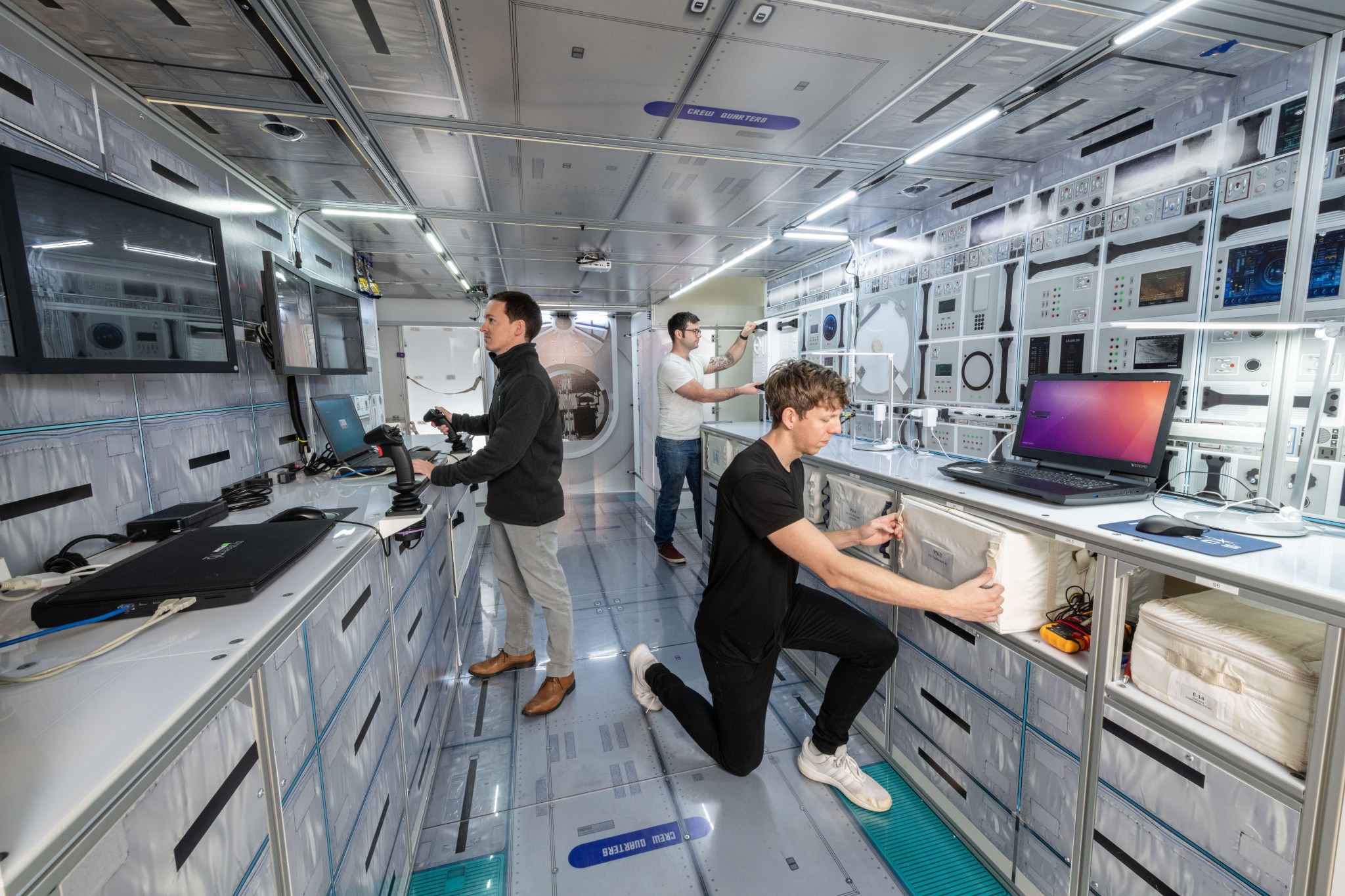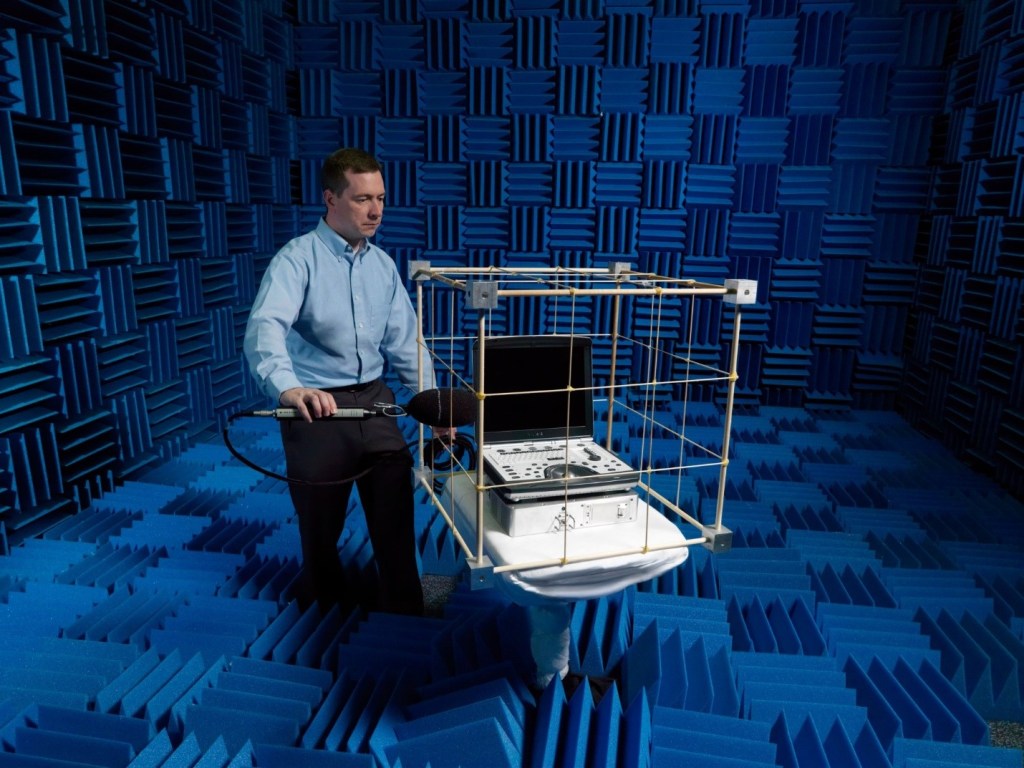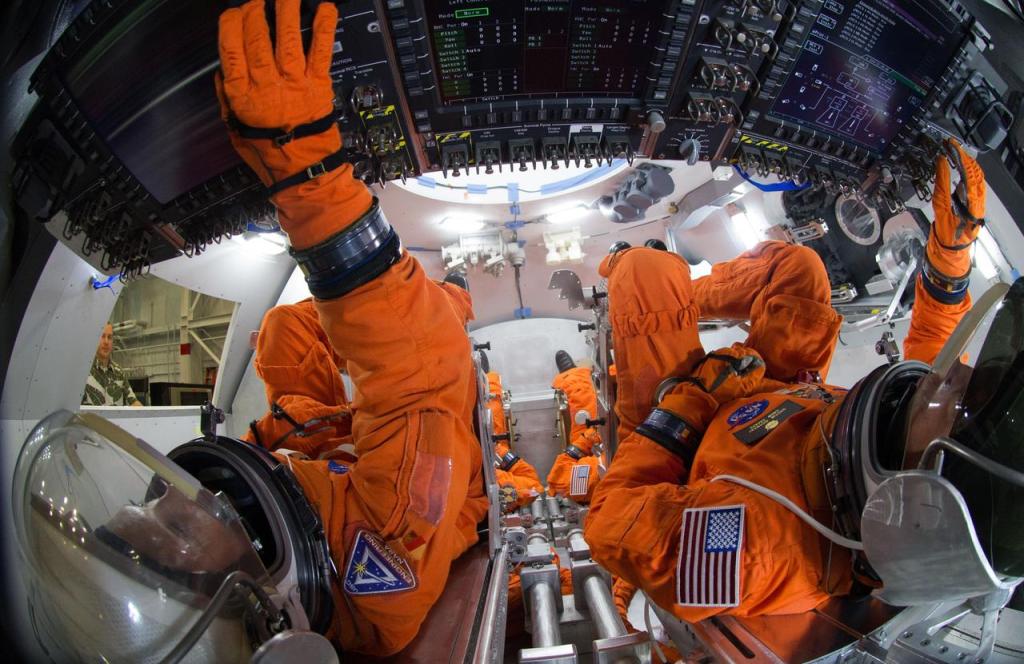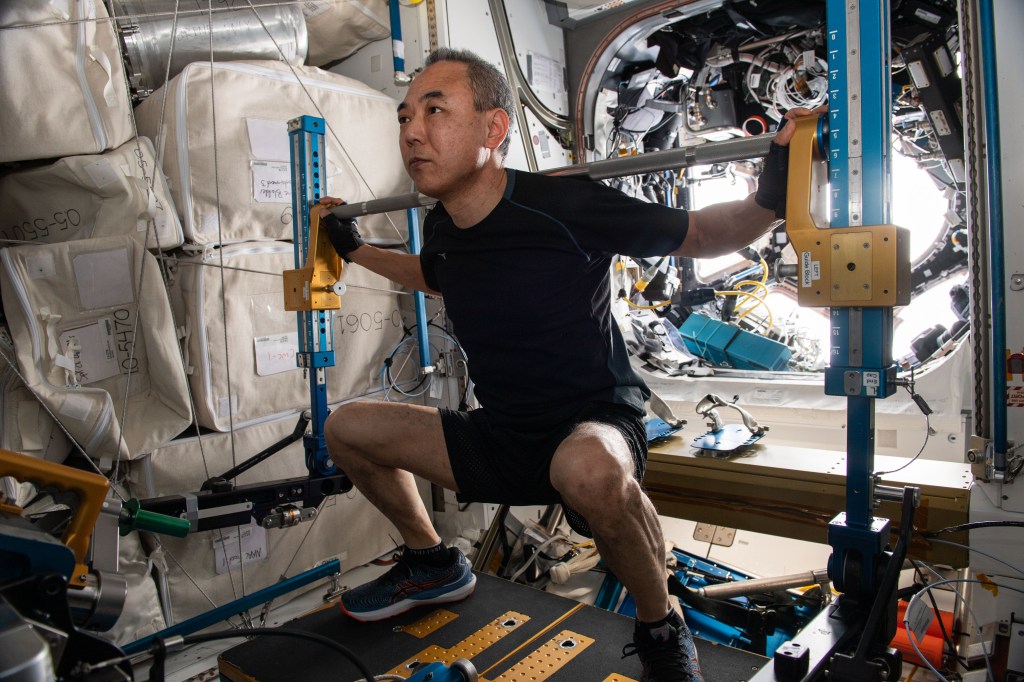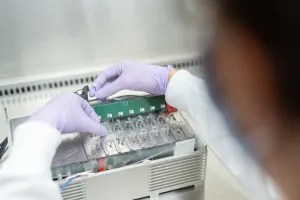Contents
- Human Factors & Performance
- Human Factors Engineering
- Human Centered Design and Space Architecture
- Anthropometry, Injury Biomechanics & Ergonomics Laboratory
- EVA and Environmental Physiology Laboratory
- Human Systems Integration
- Crew Inputs for Operations, Design & Development
- Displays and Controls Design and Evaluation
- Human-In-The Loop Evaluations
- Crew Task Analysis
- Human Error Analysis (Human Rating)
- Manual Control of Vehicles (Handling Qualities)
Human Factors & Performance
Human factors and performance are critical to human spaceflight as they ensure the design and operation of systems take into consideration human capabilities, limitations, and behavior, ultimately enhancing crew performance, safety, and mission success. Johnson Space Center’s (JSC’s) human factors and performance experts provide evaluation, testing and analysis for design of human system interactions including displays and controls, workstations, and vehicle and habitat environments. We seek insights into how to structure successful teams for space missions, as well as how to design missions so that human factors considerations are optimized. With our decades-long experience in human spaceflight, we ensure that humans can efficiently navigate through mission-critical tasks as well as mundane tasks associated with daily life in space. Experts deliver strategies to protect crew health and performance in spacecraft design, training, human-robotics interactions, space radiation, health countermeasures and psychological and team readiness. We also research the behavioral health effects of long duration spaceflight, including those related to isolation, confinement, sleep loss, work overload, deep space radiation and weightlessness. As the hub of human spaceflight, and home of NASA’s astronaut corps, human factors and performance stretches across all of JSC’s exploration science and mission operations. Our focus is on the unique perspective that the human brings to exploration. Partner with us to harness the expertise of our human factors and performance capabilities, ensuring optimized and safe human interactions in the dynamic realm of space exploration.
Human Factors Engineering
JSC Human Factors teams provide evaluation, testing, and analysis for the design of human system interactions including displays and controls, workstations, and vehicle/ habitat environments. Human Factors personnel have diverse backgrounds and experience in human factors engineering, cognitive psychology, neuroscience, biomedical engineering, physiology, and industrial engineering. Using structured methodologies and specialized tools and equipment, human factors Subject Matter Experts (SMEs) facilitate human-centered design processes in the design of hardware and software by supporting integration of humans with complex technical systems.
Experimental Design
- Task analysis
- Human-in-the-loop evaluations
- Human performance measures (workload, situation analysis, usability)
- Human factors engineering design assessments (habitat volume and layout architecture, anthropometry and biomechanics)
- Statistical analysis
Facilities and Equipment
- User testing and control rooms
- Video recording, editing, and analysis equipment
- Eye tracking
- Virtual reality and augmented reality systems
- Specialized statistical analysis software
- Remote site testing capabilities
Human Centered Design and Space Architecture
The Center for Design and Space Architecture (CDSA) is NASA’s conceptual, human centered design studio. They leverage skill in architecture and industrial design to provide customers with functional, intuitive solutions that synchronize with the integrated system.
The CDSA employs an iterative design process and utilizes a variety of digital and physical mediums, including Computer-aided drafting (CAD), virtual reality, and full-scale mockups, to quickly progress design maturity for human spaceflight systems.
- Space Architecture: interior architecture, mission architecture, functional allocation, volumetric analysis
- Design: concept development, CAD modeling, mass and volume estimation, rendering, mockup, and prototype design
- Virtual Reality: design review and evaluation, task simulation, crewed human-in-the-loop (HITL) testing
- Prototyping: 3d printing, CNC, foam core, polycarbonates, wood, metal
- Mockups: part-task, full-scale, test articles, functional prototypes
Anthropometry, Injury Biomechanics & Ergonomics Laboratory
The Anthropometry, Injury Biomechanics & Ergonomics Laboratory (AIBEL) is uniquely equipped to conduct a variety of biomechanics and ergonomics research studies that investigate issues humans will encounter while living, working, and exploring in space. AIBEL personnel provides anthropometry and biomechanical analysis and evaluation expertise to multiple groups across the NASA community, including the Extravehicular Activity Projects Office, the Commercial Crew Program, and other internal and external organizations.
- Providing 3D whole body volumetric analysis and human modeling
- Performing work volume and reach assessments, load analysis
- Evaluating unsuited and suited locomotion in reduced gravity environments
- Performing space suit modeling
- Performing Extravehicular Activities and Intravehicular Activities evaluations
- Developing Biomechanical analyses using motion capture and force platforms in the lab, in suits, and other facilities (i.e., JSC’s ARGOS, NBL, etc.)
- Providing Task analysis
EVA and Environmental Physiology Laboratory
The EVA and Environmental Physiology Laboratory (EEPL) conducts operational research and technology development to support and enhance human health and performance in suited environments including during extravehicular activities (EVA). The EEPL leads research efforts focused on optimizing human health and performance during suited operations and in suited training environments such as the Neutral Buoyancy Lab (NBL) and Active Response Gravity Offload System (ARGOS). In addition, EEPL conducts hypobaric chamber research to characterize the risk of decompression sickness during spaceflight operations and develop, validate and test pre-breathe protocols. Furthermore, EEPL develops biomedical technologies and capabilities to enable future autonomous EVA for exploration class missions where real-time support and communication with the ground will not be available.
Tasks range from highly coordinated interdisciplinary suited research studies using ground-based suited analogs, such as ARGOS and NBL, to the development of an EVA-simulation environment that uses hybrid reality and high-fidelity informatics to represent the physical and cognitive workload associated with EVA.
- Develop, validate and conduct pre-breathe protocols for space suits
- Conduct pre-breathe protocol training for crewmembers
- Assess of metabolic cost of EVA during NBL training and inflight EVA
- Perform research studies to characterize and optimize human health and performance in spacesuits in various suited environments (i.e., chambers, ARGOS, NBL, etc.)
- Perform studies to assess CO2 washout capabilities of various suits
- Development of crewmember physiological and cognitive state predictive analyses and decision support tools
Human Systems Integration
Human Systems Integration (HSI) is a robust process by which human capabilities and limitations are effectively and affordably integrated with system design, development, and operations.
HSI is a systems engineering discipline to ensure our knowledge of human capabilities and limitations are accounted for throughout the entire project/program lifecycle. It establishes interdisciplinary and comprehensive management and technical processes to enhance human systems design, reduce cost, and improve integrated system (Human + Hardware + Software) performance.
Crew Inputs for Operations, Design & Development
This small, flexible group of Human Engineering experts and stenographers have been conducting, collecting, and analyzing post-mission and on-orbit crew debriefs for the International Space Station (ISS) Program Office since the inception of ISS in 1998. They maintain the official ISS Crew Comments Database that houses ~106,000 comments from over 200 flown crewmembers, covering a wide range of topics from crew dining and hygiene to extravehicular activity/intravehicular activity (EVA/IVA) hardware performance and failures. This database is used to generate specific reports and lessons learned to inform designers, architects, engineers, researchers, and others who design and develop spaceflight vehicles and habitats.
Services
- Coordinate and conduct crew debriefs post-mission/on-orbit
- Work with system managers to develop crew questions
- Establish and execute unique debrief processes
- Develop and maintain confidential debrief database
- Analyze data and generate reports and transcripts
- Incorporation of historical and current ISS data
- Provide Stenographer services
- Provide Human Factors & Usability expertise on projects
Products
- Crew Questionnaires (Post-Mission and On-Orbit)
- Crew Debrief Transcripts
- Lessons Learned Reports (Topics, Missions, Systems)
Displays and Controls Design and Evaluation
The JSC Human Engineering Displays & Controls group utilizes an iterative user-centered design approach that ensures a system optimized for the user experience in the operational environment while reducing cost by getting feedback from users, subject matter experts, operational experts, etc. earlier in the design lifecycle.
Display standards provide guidelines that can be shared with developers to implement best practices up-front allowing evaluations to focus on other potential issues.
- Usability Evaluations
- Human-in-the-loop (HITL) evaluations
- Requirements development
- Task Analysis
- Link Analysis
- Task Allocation
- Workload Assessment
- Error Rate Analysis
Human-In-The Loop Evaluations
Human-In-The-Loop (HITL) evaluation encompasses testing of display and control formats, hand controller placement, habitat volumes and geometries, docking hatch operations, and many other scenarios where human subject input is necessary.
JSC provides analog mission planning and execution of integrated operational testing for space exploration. Human-in-the-loop (HITL) testing capabilities include establishing and coordinating a multi-disciplinary approach for operational testing, integrating analysis and development components across NASA, and using the results of testing in relevant environments for closing technology, exploration, and science knowledge questions, gaps, and risks.
Early and Iterative Human-in-the-Loop (HITL)
- Provide insight whether concepts of operations (con-ops) are realistic and achievable
- Reveal design and integration problems, and opportunities for cost efficient improvements
- Extend the design process beyond 2D concepts (drawings, PowerPoint slides) to interactive 3D prototypes and mockups in order to evaluate task performance
- Help to eliminate design flaws that may contribute to error, fatigue, loss of situation awareness, and other risks
- Support consistent design of safety and mission critical displays and controls
- Pave the way toward successful verifications
Focus Areas for HITLs
- Displays & Controls
- Piloting, manual control, handling qualities & display usability
- Seat design, ingress, and egress
- Crew vehicle egress, hatch operations, & post-landing survival
- Emergency response
- Habitability & environmental systems
- Net Habitable Volume
- Exercise
- Speech intelligibility (communications systems)
- Stowage
- Equipment access and use
Crew Task Analysis
JSC Human Factors teams have extensive experience in performing crew task analysis for space missions.
Crew Task Analysis identifies the major tasks and subtasks that the crew will perform on a mission, along with information about resources needed for the task, and related constraints and parameters, e.g., number of crew, tools, task frequency, and dependencies. Crew Task Analysis helps ensure crew have the capabilities they need to perform mission tasks. Output from a Task Analysis informs required hardware and software decisions and features. It is also used to define relevant scenarios for testing and verification.
Human Error Analysis (Human Rating)
Human Error Analysis (HEA) is a systematic approach to evaluate human actions, identify potential human error, model human performance, and qualitatively characterize how human error affects a system. The goal of the Human Error Analysis (HEA) is to identify where system improvements are needed to reduce the frequency or consequences of error to improve the overall system. HEA identifies and eliminates or controls sources of human error (including flight crew and ground crew error). HEA reduces the contribution of human error to loss-of-crew (LOC) and loss-of-mission (LOM) using task analysis, hazard analysis, risk assessment, and testing and analyses to identify sources, consequences, and mitigations for human error.
- Qualitative good design practices, qualitative and quantitative outcomes of tests, and quantitative findings from analyses
- Human error analysis to mitigate the contribution of human error
Manual Control of Vehicles (Handling Qualities)
NASA has extensive capabilities and experience in handling qualities assessment for spacecraft. Handling Qualities are those qualities or characteristics of a flight vehicle that govern the ease and precision with which a pilot can perform the various tasks that are required to support a given mission.
Handling qualities are measured on the “Cooper-Harper” (CH) rating scale, which was originally published in 1969. Since then, NASA, the FAA, DoD, and most foreign agencies have used CH ratings to assess the handling qualities of vehicles as a key component of flight certification.
- Access to simulator facilities
- Flight scenario definition
- Task analyses
- Performance criteria selection
- Test planning
- Pilot briefing and familiarization
- Test conduction and data collection
- Data analysis
























